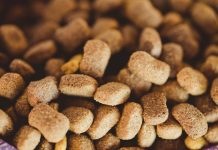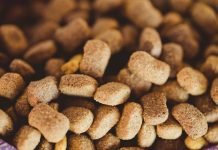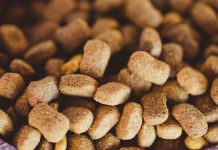Bringing a new puppy into your home is a heartwarming adventure filled with playful antics and the joy of watching your furry friend grow. As a pet parent, one of your most important responsibilities is ensuring your puppy gets the right nutrition to thrive. With countless options on the market, finding the right puppy food can seem daunting, but it doesn’t have to be. In this guide, we’ll walk you through the essential steps to choose the perfect puppy food tailored to your pet’s unique needs. From understanding ingredient labels to recognizing your puppy’s specific dietary requirements, we’ll equip you with the knowledge to make informed decisions that will support your puppy’s health and happiness for years to come. Let’s embark on this journey together, ensuring your new family member gets the best start in life.
Understanding Your Puppys Nutritional Needs
Understanding the dietary requirements of your puppy is crucial to ensuring their healthy growth and development. Puppies are in a rapid growth phase and need a balanced diet rich in essential nutrients. Proteins are fundamental as they support muscle development and tissue repair. Fats provide the energy that puppies need for their playful activities, while calcium and phosphorus are vital for strong bones and teeth.
- Age-Appropriate Formula: Choose a puppy food that is specifically formulated for your puppy’s life stage. Puppy formulas are enriched with higher levels of nutrients necessary for growth.
- Quality Ingredients: Look for high-quality ingredients such as real meat, vegetables, and whole grains. Avoid foods with artificial additives or fillers.
- Balanced Nutrition: Ensure the food provides a complete balance of proteins, fats, vitamins, and minerals.
Additionally, consider any specific health needs your puppy may have. If they have allergies or sensitivities, opt for hypoallergenic or grain-free options. Always consult with your veterinarian to tailor your puppy’s diet to their individual needs, ensuring they grow into a happy, healthy adult dog.
Exploring Different Types of Puppy Food
Understanding the variety of puppy food available is crucial to ensuring your furry friend grows up healthy and strong. Puppy food generally falls into a few main categories, each offering unique benefits. Here are some options to consider:
- Dry Kibble: A popular choice for many pet owners, dry kibble is convenient and helps in maintaining dental health by reducing plaque buildup.
- Wet Food: Known for its high moisture content, wet food is great for puppies that need to stay hydrated. It’s often more palatable, making it a hit with picky eaters.
- Grain-Free: Designed for puppies with grain sensitivities, this type of food focuses on protein and vegetables as primary ingredients.
- Raw Diet: Emulating what dogs might eat in the wild, raw diets typically include uncooked meats, bones, and organs. It’s essential to consult with a vet before starting this type of diet.
- Organic and Natural: Made without synthetic additives or pesticides, these foods can be ideal for pet owners concerned about the purity of their puppy’s diet.
Choosing the right type of food depends on your puppy’s specific needs, preferences, and any health concerns. It’s always a good idea to discuss dietary choices with your veterinarian to ensure your puppy receives a balanced and nutritious diet.

Reading and Interpreting Food Labels
When selecting the perfect puppy food, understanding the information on the packaging is crucial for ensuring your furry friend receives the best nutrition possible. Food labels are packed with details that can help guide your decision. Start by looking at the ingredient list. Ingredients are typically listed in descending order by weight. This means that the first few ingredients are the most significant components of the food. Look for quality proteins like chicken, beef, or fish as the first ingredient, which is essential for your puppy’s growth and muscle development.
- Guaranteed Analysis: This section provides the minimum percentages of crude protein and fat, and the maximum percentages of crude fiber and moisture. For a growing puppy, you’ll want a higher percentage of protein and fat.
- AAFCO Statement: The Association of American Feed Control Officials (AAFCO) statement indicates that the food meets established nutritional levels. Look for labels that say the food is complete and balanced for growth.
- Feeding Guidelines: These are recommendations based on your puppy’s weight and age. Adjust as needed based on your puppy’s activity level and body condition.
By carefully reading and interpreting these sections, you can ensure your puppy gets a diet that supports their health and vitality. Don’t forget to check for any specific dietary needs your puppy might have, such as grain-free or hypoallergenic options, and consult with your vet if you have any concerns.

Tips for Introducing New Foods to Your Puppy
Introducing new foods to your puppy can be an exciting journey, but it requires patience and care. Start slowly by mixing a small amount of the new food with their current diet. This gradual introduction helps prevent digestive issues and allows your puppy to adjust to new tastes and textures. Keep an eye on your pup for any signs of allergies, such as itching or digestive upset, and consult your vet if you notice anything unusual.
- Choose high-quality foods that are specifically formulated for puppies, as they contain the right balance of nutrients for growing dogs.
- Offer variety to ensure your puppy gets a well-rounded diet. Including different protein sources and healthy grains can prevent picky eating habits.
- Be consistent with feeding times and portions. Puppies thrive on routine, and consistent feeding schedules help regulate their digestion.
Remember, patience is key. Some puppies might be hesitant at first, but with gentle encouragement and a little creativity, like mixing the new food with a bit of warm water or a favorite treat, they will soon adapt. Your love and attentiveness will make the transition smoother for your furry friend.
















